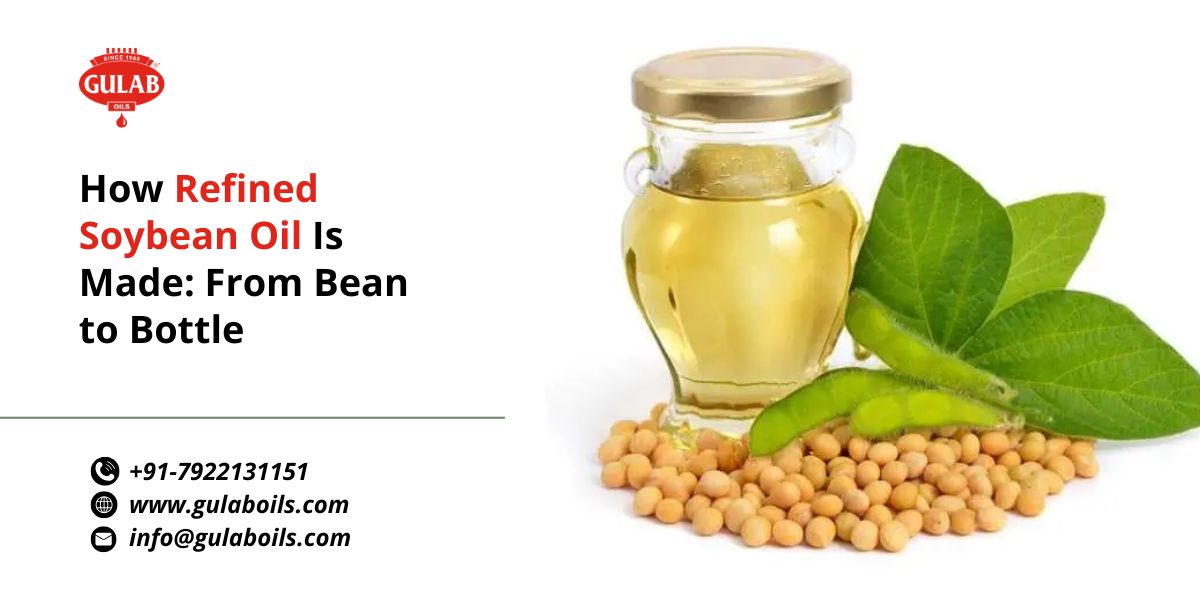 Soybean oil is one of the most widely used cooking oils in the world. Its mild flavor, high smoke point, and nutritional profile make it a favorite in kitchens and food industries alike. But before it reaches your frying pan or salad bowl, soybean oil goes through a complex and carefully controlled process to ensure it's safe, pure, and healthy.
Soybean oil is one of the most widely used cooking oils in the world. Its mild flavor, high smoke point, and nutritional profile make it a favorite in kitchens and food industries alike. But before it reaches your frying pan or salad bowl, soybean oil goes through a complex and carefully controlled process to ensure it's safe, pure, and healthy.
Let’s take a closer look at how refined soybean oil ↗ is made—from harvesting the bean to bottling the final product.
Step 1: Harvesting the Soybeans
The journey of refined soybean oil begins in the fields where soybeans are grown. Farmers wait until the pods turn brown and dry, a sign that the beans have matured. Once harvested, the beans are cleaned to remove dust, stones, and other impurities. Clean, healthy soybeans are essential for producing high-quality oil.
Step 2: Cleaning and Dehulling
After harvesting, the soybeans undergo a second round of cleaning. This step ensures that no contaminants are carried forward. Once clean, the outer shells or hulls of the beans are removed in a process called dehulling. This increases oil yield and ensures a smoother refining process.
Step 3: Cracking and Flaking
The dehulled beans are then cracked into smaller pieces and rolled into thin flakes. Flaking increases the surface area, making it easier to extract oil. This step is critical for efficiency and helps reduce waste during the extraction process.
Step 4: Oil Extraction
Oil is extracted from the soybean flakes using one of two main methods:
-
Mechanical pressing, which physically squeezes the oil out.
-
Solvent extraction, the more common method in commercial production, where a food-grade solvent like hexane is used to dissolve the oil.
After extraction, the solvent is removed, leaving behind what is known as crude soybean oil. While this oil contains beneficial components, it still has impurities and must be refined before it’s suitable for cooking.
Step 5: Degumming
The first refining step is degumming. During this process, the crude oil is treated with water or acid to remove phospholipids and other gum-like substances. These impurities can affect the oil’s clarity and shelf life, so removing them is essential for quality and stability.
Step 6: Neutralization
Next, the oil is neutralized by adding an alkaline solution such as sodium hydroxide. This helps remove free fatty acids that can cause off-flavors and reduce the oil’s nutritional value. After this stage, the oil is cleaner and more suitable for further refinement.
Step 7: Bleaching
Bleaching removes color pigments and any remaining impurities using bleaching clay or activated carbon. The oil is mixed with the clay and then filtered. This process gives the oil its clear, golden appearance that you see in bottles on store shelves.
Step 8: Deodorization
The final step in the refining process is deodorization. This involves heating the oil under vacuum and injecting steam to remove any remaining volatile compounds that may give the oil an unwanted smell or taste. The result is a neutral, odor-free oil ready for packaging.
Step 9: Bottling
After refining, the oil is cooled, filtered one last time, and then packaged. The final product is what we commonly recognize as refined soybean oil. It's now ready to be distributed for cooking, baking, frying, and more.
Why Refined Soybean Oil Stands Out
Refined soybean oil is not only cost-effective but also rich in polyunsaturated fats and omega-3 fatty acids. It’s ideal for heart health when consumed in moderation. Its neutral flavor also makes it perfect for a wide range of cuisines—from deep-frying Indian snacks to dressing Western-style salads.
Consumers searching for the best soybean oil ↗ often look for brands that maintain quality at every step of production. That’s where trust and transparency in the manufacturing process become essential.
Buying Soybean Oil Online: What to Look For
With the rise of digital shopping, many people now prefer to buy soybean oil online. But with so many options available, it’s important to choose a brand that offers not just convenience but also credibility and quality assurance.
Look for:
-
Cold-pressed or refined labels depending on your need.
-
Packaging that ensures freshness and hygiene.
-
Certifications or quality marks from food authorities.
-
Transparent sourcing and manufacturing practices.
These factors make a big difference when you're trying to choose the healthiest and most reliable option for your home or business.
Gulab Oils: Your Trusted Source for Quality Soybean Oil
When it comes to quality and trust, Gulab Oils stands out as a name you can rely on. With decades of experience in oil processing and a strong reputation for delivering the best soybean oil, Gulab Oils ensures every bottle meets the highest standards of purity, flavor, and nutrition.
Whether you’re a home cook, a restaurant owner, or a food manufacturer, Gulab Oils provides soybean oil that’s not just refined—but refined with care.
conclusion
In conclusion, refined soybean oil goes through a meticulous, multi-step process that ensures safety, purity, and nutritional value from the farm to your kitchen. Understanding how soybean oil is made helps you make informed choices about the food you consume daily. Whether you're a household buyer or run a food business, choosing a reliable source matters. That’s where Gulab Oils ↗ delivers unmatched quality and consistency. If you're looking to experience the best soybean oil with trusted sourcing and processing,
we’re here to help. For bulk inquiries, product details, or to buy soybean oil online, feel free to contact us ↗ Gulab Oils be your go-to partner for pure, healthy, and reliable cooking oil solutions.